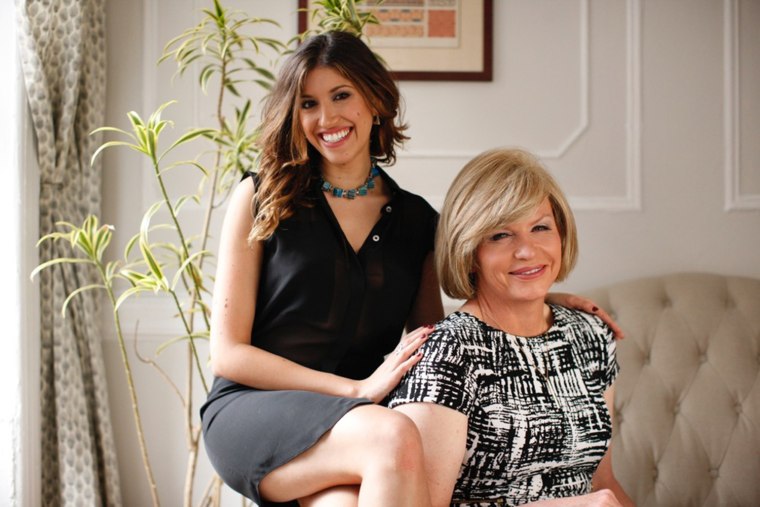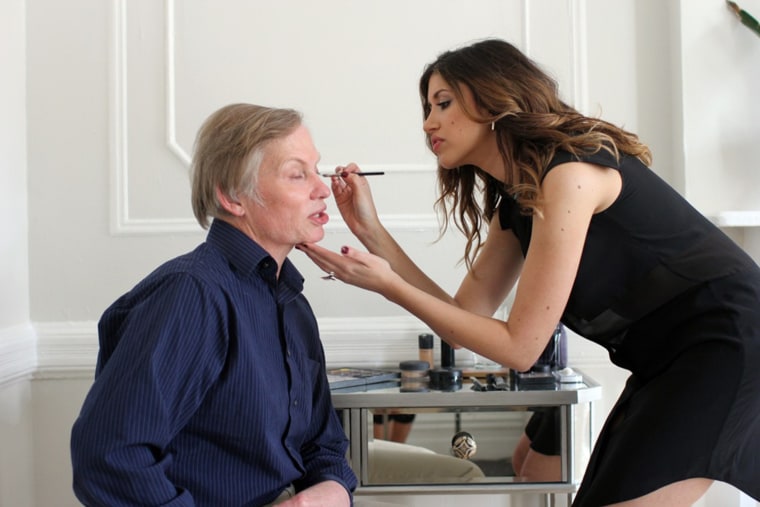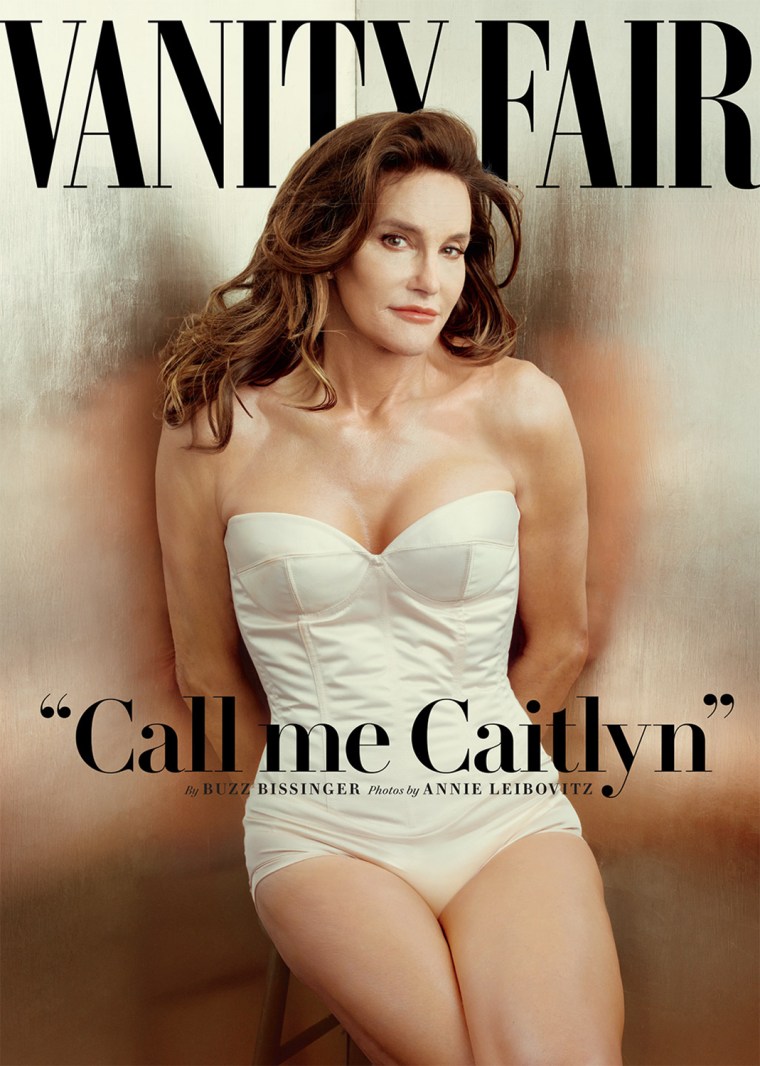Caitlyn Jenner’s dramatic debut aside, it takes far more than good makeup and the right outfit to appear feminine.
It’s about turning your shoulders when speaking with friends over dinner. Or putting money in the cashier’s hand, rather than on the counter, after ordering coffee. It can also be as simple as keeping your elbows in when gesticulating to make a point at the office.
Monica Prata, 27, has taught all these finer points of femininity — while also providing makeup instruction, wardrobe styling and emotional guidance and support — as a feminine image coach.
She started her company, Nouveau She, in 2008 after working as a sales clerk at Nordstrom and then as a makeup artist for M.A.C. She noticed men shopping uncomfortably, and usually secretly, for themselves and identified a need. TODAY.com asked Prata to explain what her role entails.

What exactly do you do?
I work as a feminine image consultant for men who are transitioning to become women. Essentially what that means is I teach full-range femininity — not just the hair and the makeup, but really the embodiment, the attitude, the movement (physical and behavioral) of this, almost idealized, sense of femininity.
Caitlyn Jenner came out on the Vanity Fair cover and she looks incredibly feminine. And so much of that has to do with this stereotype we had that Bruce, as Caitlyn, was going to look like a man in a dress. To overcome that, a lot of trans women do want to look very, very feminine. And that’s where I come in. I help them create that look they have in mind.
How do you teach femininity?
I’m not like, “Here’s a handbook. You want to do x, y and z. And this is how you wave, and this is how you sit.” It’s really not that kind of approach. When my clients come to me, it’s really more about learning what their natural attitudes and movements are, and just refining them to make it more feminine.

For example, think of a guy in your office who talks with his hands. He has big gestures, and his elbows will be out, and his wrists will be very, very straight as he gestures. Then if you look at a woman in your office like me, who constantly talks with her hands. She’ll have her elbows in, and the hand motions will be a little closer to her chest. And her wrists will be looser and more flexible as she speaks. You don’t want to take away the things that make that person who they are. Rather, you want to refine them to fit their new image.
How easy is it to adopt feminine mannerisms?
There are things I've known for years, like how to put on makeup. And I’ve had all the time in the world to try different hair styles, and clothing styles. I know how to walk when I want to turn heads in a room, or when I want to present professional. We all know those things because we’re taught those things, because of the ways we’re socialized by the people around us and by movies and media images. We're taking all this in as young women.
This idea that a transgender woman would suddenly be able to flip some sort of switch and do all of those things suddenly is really unfair. To not recognize that this person has been socialized as a male and has had to embody all those behaviors is just unfair. And so to dress and gracefully transition into a woman, 100 percent, presenting perfectly is spectacularly unrealistic.
Caitlyn Jenner’s introduction through Vanity Fair was dramatic. What hurdles will she continue to face as she continues to transition — because transitioning is an ongoing process, right?
It is. For so many of my clients, before they ever step foot outside, they had years of dressing in their home, and having friends over for casual drinks. Socializing in a little bubble is very different than socializing publicly and presenting publicly. Because Caitlyn has these incredible representations of feminine beauty in the Kardashian women, she’ll probably have better luck than many.

But at the same time, there are weird challenges that women experience that I sometimes find myself having to explain to clients that can be jarring. I sometimes feel like I’m a mom talking to a young daughter. Like, don’t walk outside late at night. Watch your purse. Don’t just leave your things everywhere.
It has nothing to do with the fact they’re transgender, because many of my clients are spectacularly passable. But sadly, they have to look at the world differently because people are looking at them differently. When they went to a store when they were a man, nobody messed with them. Well, guess what? If it’s late at night and you’re walking through old town in Las Vegas, you'd better watch your stuff. It’s just not the same. That male privilege is lost. And I’ve heard that from lots of clients, just the way they’re treated by men and women changes. And again, that has nothing to do with the fact they’re transgender. It’s just going from male to female.
Some people get confused about someone who is a cross dresser and someone who is transgender. There's a difference, right?
Absolutely, not that there aren't overlaps. Someone who is cross dressing is just about the physical representation of femininity. Someone who is cross dressing isn’t someone who’s woken up as a child in the middle of the night, feeling dysphoria, going, “Oh my god, I’m in the wrong body.” The person doesn’t go to bed every night praying to wake up the opposite gender. Which is the story for not one, not five, not 10, but literally hundreds of people I've worked with. To me, that’s representative of someone who is transgendered. This feeling that they’ve always been in the wrong physical form.
Someone who is cross dressing is someone who just wants to explore, or try on different styles or get a taste, but doesn’t necessarily feel like they need to change their core identity.
What are some of the biggest things you've learned about the transgender community?
I’ve been doing this since 2008. What have I learned about this community? That it’s really not black and white. That it’s a huge grey space. And that there are all sorts of representations of what femininity means.

We have this hypersexualized ideal — really thin, long hair, pouty lips, long lashes. That’s what a lot of my clients come to me with. That’s what they want to look like. And sometimes I have to tell them, that’s not the realistic representation of femininity. If they really look at woman, not in magazines, that ideal is not really what women look like. The way we present women, especially to people who are socialized as men, is really homogeneous and really unrealistic.
I also learned about the vast world of how we perceive ourselves. I have clients who come to me, and maybe they want to be a professional woman in their office. But how they view a professional women in their office may not be how I view a professional woman in their office, or how somebody else does. So there’s an amalgam of representations for each transgender woman. What femininity means to you may mean something totally different than what femininity means to me. It’s a very personal experience and expression. There’s no one way to present femininity. There’s no one way to be female. That’s ridiculous.